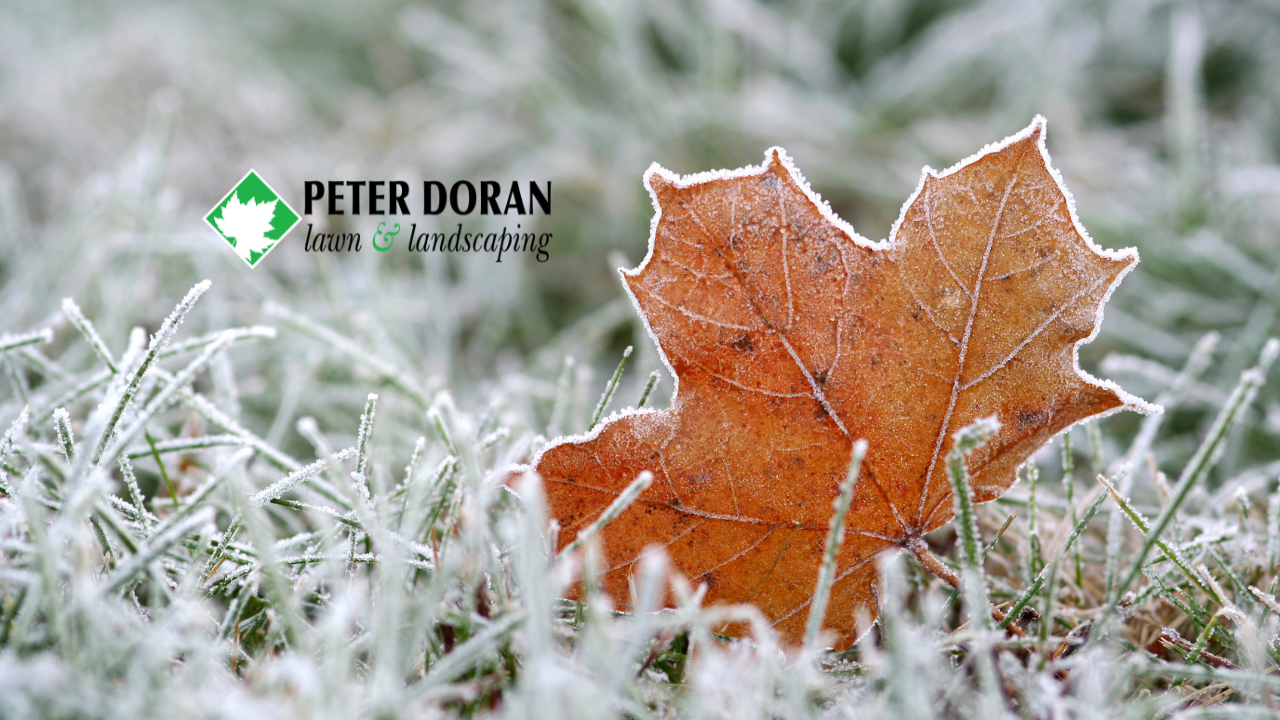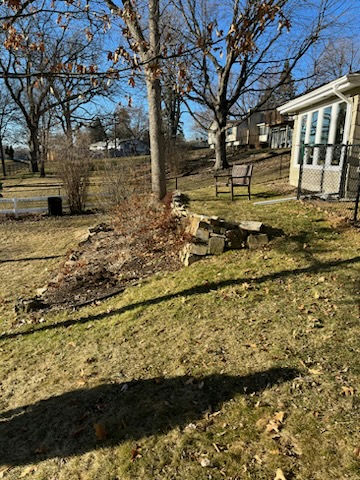As the leaves begin to turn and a crispness fills the air, Minnesota homeowners know that winter is on its way. For those of us who take pride in our lawns, fall is a critical time to prepare our cool-season grasses for the harsh conditions ahead.
Many homeowners wonder how to maintain a lush, green lawn despite Minnesota’s challenging climate. The key is understanding the specific needs of cool- season grasses and implementing a targeted fall care strategy. By following proven best practices, you can ensure your lawn not only survives but thrives, emerging healthy and vibrant in the spring.
The goal here is simple: equip you with the knowledge to give your lawn the best possible chance. We’ll cover everything from identifying your grass type to the optimal timing for fertilization, so you can approach this fall with confidence.
Overview of Cool-Season Grasses
What Are Cool-Season Grasses?
Cool-season grasses are types of grasses that thrive in moderate temperatures, with their peak growth occurring in the spring and fall. These grasses are well-suited to regions like Minnesota, where summers can be hot and winters are cold.
Cool-season grasses flourish when temperatures are between 60°F and 75°F. They use the cooler temperatures and increased moisture of fall to build strong root systems, which are essential for surviving the winter and supporting vigorous growth in the spring.
In Minnesota, this means that the period from late August through October is prime time for cool-season grass activity. During these months, the grass focuses on storing carbohydrates in its roots and tillers. This stored energy is what fuels the plant’s initial growth when the snow melts and temperatures rise again. Understanding this growth cycle is crucial for effective fall lawn care.
Common Cool-Season Grass Types in the Twin Cities
The Twin Cities region is dominated by a few key types of cool-season grasses, each with its own unique characteristics and requirements.
Kentucky Bluegrass
Kentucky Bluegrass is a popular choice for its fine texture and rich, dark green color. It spreads through rhizomes, forming a dense, resilient turf. Kentucky Bluegrass thrives in full sun but can tolerate some shade.
The best practices for maintaining Kentucky Bluegrass include regular fertilization, proper mowing, and consistent watering, especially during dry periods. Fall is an excellent time to fertilize Kentucky Bluegrass to promote strong root growth before winter.
Perennial Ryegrass
Perennial Ryegrass is known for its rapid germination and establishment, making it ideal for overseeding thin or bare areas. It has a bunching growth habit and a fine to medium texture. While it doesn’t spread as aggressively as Kentucky Bluegrass, it provides quick cover and blends well with other grass types.
When overseeding with Perennial Ryegrass, ensure good seed-to-soil contact and consistent moisture for optimal germination. This grass type is particularly useful for preventing soil erosion and quickly filling in damaged spots.
Tall Fescue
Tall Fescue is a more robust and drought-resistant option compared to Kentucky Bluegrass and Perennial Ryegrass. It has a coarser texture but offers excellent wear tolerance and adaptability to various soil types.
Tall Fescue is a good choice for areas that receive heavy foot traffic or have less-than-ideal soil conditions. When establishing Tall Fescue, proper soil preparation and adequate watering are crucial. Its deep root system helps it withstand dry conditions, making it a reliable choice for Minnesota lawns.
Fall Lawn Care Best Practices
Timing Your Fall Lawn Care
Timing is everything when it comes to fall lawn care. September and October are the most critical months for preparing your lawn for winter in Minnesota. These months provide the ideal conditions for cool-season grasses to recover from summer stress and build up energy reserves for the dormant season.
One of the primary signs that it’s time to prepare your lawn for winter is the slowing of growth. As temperatures cool, you’ll notice that you don’t need to mow as frequently. This is your cue to start focusing on fall-specific tasks like aeration, overseeding, and fertilization. Getting these tasks done before the ground freezes is essential for maximizing their effectiveness.
Aeration and Overseeding
Aeration involves creating small holes in the soil to alleviate compaction and improve air, water, and nutrient penetration. This is particularly beneficial for cool-season grasses, as it allows their roots to breathe and access essential resources. Core aeration, which removes small plugs of soil, is generally more effective than spike aeration.
Overseeding, or planting new grass seed over existing turf, is an excellent way to thicken your lawn and introduce new, vigorous growth. The best time to overseed is immediately after aerating, as the holes created by aeration provide the perfect environment for seed germination. When selecting seed, choose a blend that is well-suited to your specific lawn conditions and grass type. Proper timing, good seed-to-soil contact, and consistent watering are key to successful overseeding.
Fertilization Strategies for Fall
Fall fertilization is arguably the most important fertilization of the year for cool-season grasses. Applying fertilizer in the fall helps the grass store carbohydrates, which are essential for winter survival and spring green-up. Look for a fertilizer that is high in phosphorus and potassium, as these nutrients promote root development and overall plant health.
Avoid fertilizers that are high in nitrogen during the fall, as nitrogen promotes top growth, which is not desirable as winter approaches. Instead, focus on products specifically formulated for fall lawn care. These fertilizers typically have a higher ratio of phosphorus and potassium to nitrogen. Applying fertilizer in late fall, after the grass has stopped growing but before the ground freezes, is often the most effective approach.
Mowing Techniques for Fall
Mowing is still an important task in the fall, but the techniques you use should adapt as the season changes. Gradually reduce your mowing height as the weather cools, but avoid cutting the grass too short, as this can stress the plants and make them more susceptible to winter damage.
As a general rule, aim to maintain a mowing height of around 2.5 to 3 inches for most cool-season grasses in the fall. Before storing your lawn mower for the winter, be sure to clean it thoroughly, sharpen the blades, and perform any necessary maintenance. This will ensure that your mower is ready to go when spring arrives.
Addressing Common Lawn Issues in Fall
Identifying and Controlling Weeds
Fall is a prime time for certain weeds to take hold in Minnesota lawns. Common culprits include dandelions, creeping Charlie, and various broadleaf weeds. Identifying these weeds early is crucial for effective control.
The best approach for weed management in the fall is to use a selective herbicide that targets weeds without harming your cool-season grasses. Apply the herbicide on a day when there is no rain in the forecast and when temperatures are mild.
For persistent weeds, you may need to repeat the application. Proper lawn care practices, such as regular mowing and fertilization, can also help prevent weed infestations by promoting a dense, healthy turf.
Disease Prevention
Minnesota’s cool, damp climate can create favorable conditions for lawn diseases, particularly in the fall. Common diseases include brown patch, dollar spot, and red thread. These diseases can cause unsightly patches of dead or dying grass.
Preventing lawn diseases starts with proper watering and drainage. Avoid overwatering your lawn, especially in the evening, as this can create a moist environment that encourages disease development. Ensure that your lawn has good drainage to prevent water from pooling.
If you notice signs of disease, such as discolored spots or lesions on the grass blades, apply a fungicide according to the manufacturer’s instructions. Maintaining a healthy, well-nourished lawn is the best defense against disease.
Preparing for Winter and Spring Transition
Winterizing Your Lawn
As temperatures drop, it’s essential to take steps to protect your lawn from winter damage. One simple yet effective method is to leave grass clippings on the lawn after mowing. These clippings act as a natural mulch, providing insulation and returning nutrients to the soil.
In areas that are prone to heavy snow or ice accumulation, consider using a protective covering, such as burlap or straw, to prevent damage from snow mold. Avoid walking on your lawn when it is covered in frost or snow, as this can damage the grass blades.
These simple precautions can help your lawn survive the winter and emerge healthy in the spring. Consider consulting with professionals like Peter Doran Lawn and Landscaping for personalized advice.
Planning for Spring
Fall is also a great time to start planning for spring lawn care. Take some time to assess the condition of your lawn and identify any areas that need special attention. Setting goals for the spring, such as thickening the turf, controlling weeds, or improving soil health, can help you develop a targeted plan of action.
Maintaining healthy soil through the winter months is crucial for spring success. Consider conducting a soil test in the fall to determine the nutrient levels and pH of your soil. Based on the results, you can amend the soil with compost or other organic matter to improve its fertility and structure. A well-prepared soil will provide the foundation for a healthy, vibrant lawn in the spring.
Resources for Twin Cities Homeowners
Local Lawn Care Services
For homeowners who prefer professional assistance, there are many reputable lawn care services in the Twin Cities area. These services can provide a range of services, from fertilization and weed control to aeration and overseeding. Consulting with local experts who are familiar with the Twin Cities climate and soil conditions can be particularly beneficial.
DIY Lawn Care Tips
For those who prefer to tackle lawn care themselves, there are numerous resources and tools available to help you succeed. Local gardening centers and nurseries offer a wide selection of lawn care products and equipment. Many also offer workshops and seminars on lawn care best practices.
Additionally, there are numerous online guides and resources that provide valuable information and advice. Don’t hesitate to reach out to local gardening clubs or extension offices for personalized guidance.
What This Means for Your Property
Preparing your cool season grass in Minnesota is essential for ensuring a healthy, vibrant lawn come spring. By understanding the specific needs of your grass type, timing your fall care appropriately, and addressing common lawn issues, you can set your lawn up for success.
Remember to focus on aeration, overseeding, and fertilization in the fall, and take steps to protect your lawn from winter damage. For personalized lawn care in Minnesota, consider reaching out to Peter Doran Lawn and Landscaping for expert guidance.



